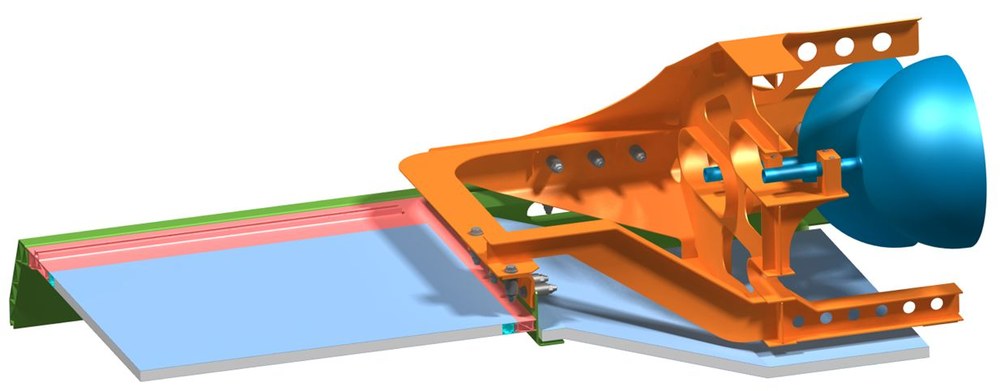As one of the largest global emitters of CO2 and greenhouse gases, the transportation sector must reduce this contribution. At the same time, the railroad represents a sustainable mode of transportation on routes that are already electrified. However, the electrification of a railroad line can often only be economically viable for heavily used routes. Branch lines will also be operated in the future with vehicles that are not dependent on overhead contact wires, so far mainly diesel vehicles. In order to reduce greenhouse gas emissions, rail vehicles with battery, fuel cell and bimodal drives are being developed for non-electrified lines. Due to the small quantities produced to date, these are primarily adaptations of vehicles that were originally developed for diesel or electric overhead line drives. Their basic structure forms the basis for the variant with alternative drives. If the vehicles are upgraded with additional batteries and/or fuel cells (bimodal) instead of diesel or overhead line operation, these components require previously unconsidered construction volume and introduce higher loads into the structure. Currently, these loads are absorbed by local adjustments and the structure is not optimized for the changed boundary conditions caused by alternative drives. This leads to additional weight and additional raw material consumption.
Objective of the project
The aim of the AnoWaAS project (adapted and optimized car body concept for alternative drive systems in rail vehicles) is to develop a rail vehicle car body that is optimally adapted to alternative drive systems (battery and fuel cell) in terms of structure and architecture. A new, lightweight integration and arrangement concept was developed for the large components of alternative drive systems in the supporting structure. These are primarily the energy storage units, i.e. the very large and very heavy batteries of battery-powered vehicles and the large-volume, cylindrical hydrogen tanks in vehicles with fuel cells. Due to the large mass and dimensions of these components, structural decoupling of the drive equipment from the vehicle body is no longer expedient. This project therefore developed proposals for an optimized arrangement and structural integration of these components. In addition, joining processes such as Friction Stir Welding (FSW) were investigated and economically evaluated for the large structures under consideration.
Force flow optimized design
Despite the requirements of alternative drives, the developed car body structure is 20% lighter per running meter than conventional car body structures. The geometry of the window cut-outs has a significant influence. Conventional rectangular window cut-outs lead to critical stresses in the window corners despite a reinforcement of the cover plates of the side wall (5 % increase in mass). A force flow-adapted design of these cut-outs (e.g. trapezoidal or triangular windows) leads to a mass reduction of 8.4 % and 22 % less deflection with a simultaneous increase in window area of 11.1 %. The width of the window struts can be reduced by 71 % to 132 mm. In addition, structural add-on parts (side wall extension or roof frame) provide more space for the flow of forces. This reduces the critical stresses of the overall system. Figure 1 a) shows the conventional side wall structure. The critical stress concentrations in the window corners and in the door area are clearly visible (red). Figure 1 b) shows the force flow-optimized side wall layout with adapted window cut-outs and side wall extension and significantly more and larger low-loaded areas (grey and blue).

Adapted construction methods
The low-load areas mentioned above can be replaced by lighter and more sustainable construction methods without compromising the load-bearing capacity. Among other things, the use of sandwich construction methods and milled-out sections were investigated. The use of sandwich construction methods enables a 28.5% lighter roof structure compared to the extruded aluminum profile construction method. At the same time, the use of FSW was investigated in the project in order to enable an economical connection of both construction methods. The mass of the side wall was reduced by milling out areas subject to low loads. This enabled a mass reduction of 8.1 % to be achieved.

Function integration
The roof structure was further broken up and lowered in the area of the H2 tanks. This provides sufficient space for the required H2 tanks. In order not to weaken the rigidity of the vehicle body, a load-bearing but removable frame structure was developed, which also serves to accommodate the H2 tanks. The side wall was extended to connect the underfloor components such as the battery. This avoids double structures. The structural extensions of the side wall and the tank frame not only accommodate the equipment components but also relieve the load on critical areas. They lead to a more homogeneous load flow through the overall structure and thus support the use of new and lighter construction methods.
Overall, the AnoWaAS research project shows that with an adapted vehicle body structure, it is possible to reduce the real producible structural mass per meter by up to 18.2 % compared to previous vehicles, despite the significantly more space-intensive and heavier equipment components. Further adjustments are possible in the low-load areas, so that a mass reduction of 20-25% is assumed.

Project Management
Project Management Jülich, funded by the Federal Ministry for Economic Affairs and Climate Action as part of the Lightweight Construction Technology Transfer Program
Funding amount
€4, 532, 000
Project duration
June 2021 - September 2024
Participants:
Participating companies/institutions:
- Hörmann Vehicle Engineering GmbH
- ALSTOM
- DLR - Institut für Fahrzeugkonzepte
- elemag GmbH
- GSI mbH Niederlassung SLV Berlin-Brandenburg
- Rausch Metalltechnik GmbH
- Universität Stuttgart - Institut für Maschinenelemente
- 3A Composites GmbH
Associated companies:
- Böllhoff
- 3a Composites

